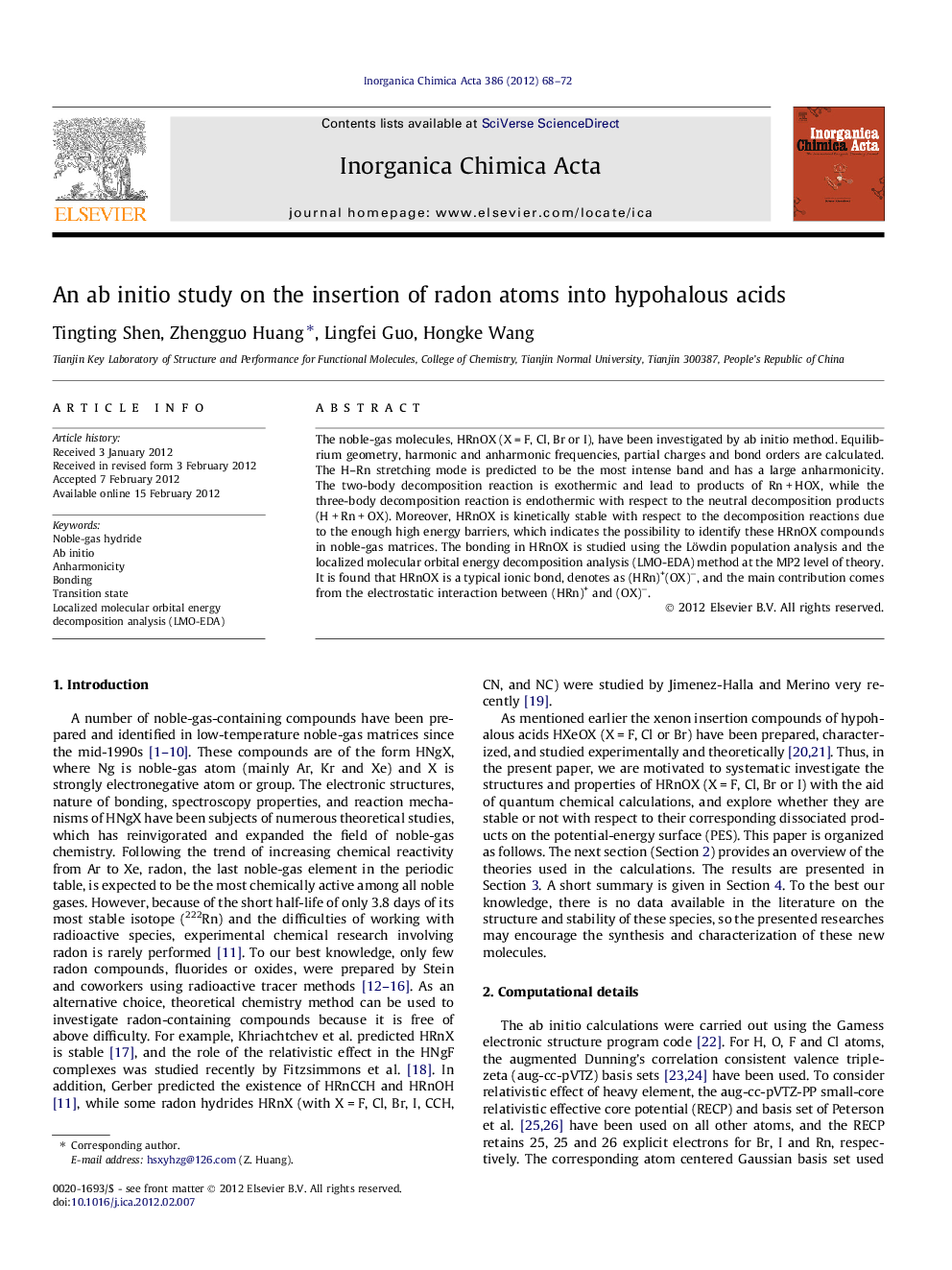| Article ID | Journal | Published Year | Pages | File Type |
|---|---|---|---|---|
| 1310983 | Inorganica Chimica Acta | 2012 | 5 Pages |
The noble-gas molecules, HRnOX (X = F, Cl, Br or I), have been investigated by ab initio method. Equilibrium geometry, harmonic and anharmonic frequencies, partial charges and bond orders are calculated. The H–Rn stretching mode is predicted to be the most intense band and has a large anharmonicity. The two-body decomposition reaction is exothermic and lead to products of Rn + HOX, while the three-body decomposition reaction is endothermic with respect to the neutral decomposition products (H + Rn + OX). Moreover, HRnOX is kinetically stable with respect to the decomposition reactions due to the enough high energy barriers, which indicates the possibility to identify these HRnOX compounds in noble-gas matrices. The bonding in HRnOX is studied using the Löwdin population analysis and the localized molecular orbital energy decomposition analysis (LMO-EDA) method at the MP2 level of theory. It is found that HRnOX is a typical ionic bond, denotes as (HRn)+(OX)−, and the main contribution comes from the electrostatic interaction between (HRn)+ and (OX)−.
Graphical abstractAll HRnOX (X = F, Cl, Br and I) are stabilized kinetically with respect to the two-/three-body decomposition reactions by enough highly energy barriers. The three-body decomposition reactions are predicted to be the mainly decomposition channels because of the lower energy barriers of TS2.Figure optionsDownload full-size imageDownload as PowerPoint slideHighlights► The equilibrium geometry and anharmonic characters of HRnOX are calculated. ► Its binuclear copper(I) complexes with phosphine ligand are obtained. ► The thermodynamical and kinetical stabilities of HRnOX (X = F, Cl, Br or I) are discussed. ► The bonding of HRnOX is analyzed using the Löwdin population analysis and LMO-EDA.
